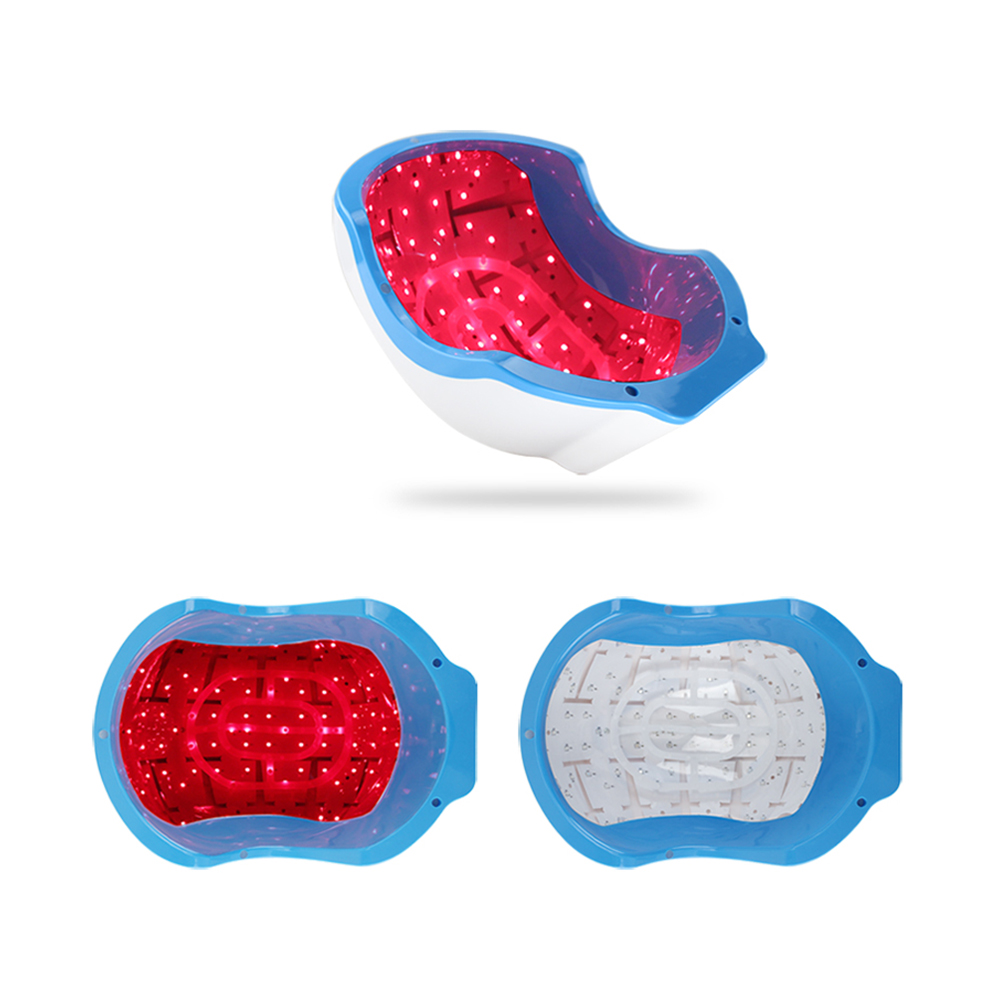The Remarkable Effects of Red Light Therapy for Hair Growth
Hair loss and thinning afflicts millions of men and women, causing emotional distress and negatively impacting quality of life. Pharmaceutical treatments like minoxidil and finasteride have side effects and are not always effective. Fortunately, emerging research on red light therapy indicates it may be an effective natural treatment option.

Understanding Hair Follicle Biology
Human scalp hair grows from follicle structures under the skin. The hair follicle cycles through three main phases:
Anagen – active hair growth
Catagen – transitional regression phase
Telogen – resting phase
In pattern baldness, the anagen phase shortens, hairs spend more time in telogen, and follicles shrink, producing thinner hairs. Treatments aim to lengthen anagen and increase hair density.
Red light therapy has emerged as a drug-free way to improve hair growth by targeting the hair follicle cycle.
Overview of the Scientific Study
The 2021 study on red light therapy for hair growth was conducted by dermatology researchers at Huashan Hospital in Shanghai, China.
They obtained occipital scalp hair follicles from patients undergoing hair transplantation surgery for androgenetic alopecia (pattern baldness).
The intact follicles were divided into 3 groups and cultured in a growth medium. One group was treated with 5 minutes of 650nm red light every other day. Another group received 10 minutes of light. The control group received no light treatment.
After 8-10 days, follicle growth parameters were analyzed with the following results:
- 5 minute red light treatment significantly increased hair shaft elongation compared to control
- 10 minute treatment also increased growth but was not statistically significant
- Both light treatments increased the number of proliferating follicle cells
- Light treated follicles stayed in the anagen (growth) phase longer before transitioning to catagen regression
This demonstrated that regular exposure to red light keeps follicles actively growing longer, promoting hair growth.
To identify genetic and molecular changes underlying these effects, the researchers performed RNA sequencing on the hair follicle cells.
RNA Sequencing Results: Mechanisms of Red Light Therapy
RNA sequencing analyzes all the gene expression in cells. The researchers compared sequencing data between red light treated and control hair follicle cells.
They identified major genetic pathways modulated by red light which support hair growth, including:
Inflammation
- Red light decreased expression of inflammation and immune response genes
- Scalp inflammation can inhibit follicle growth
- therefore, red light may reduce inflammation to promote growth
Metabolism
- Numerous metabolism genes were upregulated by red light
- Increased metabolism provides more cellular energy
- This powers faster cell proliferation and growth
Cell Adhesion
- Red light increased cell-cell adhesion protein genes like integrins
- Enhanced cell adhesion promotes growth and tissue regeneration
Cell Cycle Control
- Red light increased expression of cell cycle control genes
- This regulates follicle cell proliferation and cycle progression
- May extend anagen growth phase and delay catagen regression
In summary, at the genetic level red light reduces inhibitory inflammation, increases growth-promoting cell metabolism and proliferation, and regulates the hair cycle.
Benefits of Red Light Therapy for Hair Loss
This thorough lab study provides strong evidence that red light therapy can effectively improve human hair growth. Potential benefits for hair loss include:
- Increased density and thickness of existing hairs
- Promoting growth of dormant or shrunken follicles
- Delaying progression of miniaturization in pattern baldness
- Increased efficacy and decreased side effects when combined with medications like minoxidil
However, full bald areas are unlikely to fully regrow with red light therapy alone. The study authors noted it may be most effective for early stage pattern baldness before full hair loss occurs.
Home Red Light Therapy Devices
Clinical red light therapy devices can be costly. LED hair growth devices designed for at-home use provide an accessible option. These consist of panels or helmet that deliver therapeutic wavelengths of light.
When shopping for an at-home device, look for the following features:
- LED light in the 600-680nm range
- Power density of 5-50mW/cm2
- Treatments 15-30 minutes every other day
- Full coverage of scalp with multiple panels or heads
Consistency is key – daily use for at least 16 weeks is recommended to see results. Be patient and take progress photos to track changes.
Combine with Other Treatments
For optimal results, incorporate red light therapy into your overall hair growth regimen:
- Use prescription medications like finasteride and minoxidil as directed by your dermatologist along with light therapy.
- Take hair-healthy supplements like biotin, zinc, iron, and vitamin D.
- Reduce stress and improve sleep – this helps lower inflammation and cortisol.
- Consider using amino acid supplements, essential oils, or laser combs as well.
The Future of Red Light for Hair Loss
This research demonstrates how red light therapy can improve human hair growth at a cellular level. While more clinical studies are still needed, red light presents a promising drug-free treatment option for improving hair thickness and density.
Consistent home use of red light LED devices may slow or stop progression of pattern baldness. Especially when combined with other proven treatments, red light can be a powerful hair growth tool. Start your hair restoration journey with red light LED therapy today. Combat hair loss and increase hair with our IllumiGrowth Hair Revitalizer Laser Helmet.


